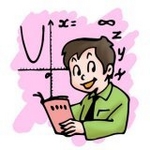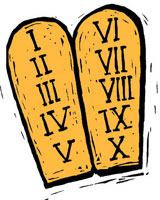
Worksheets and No Prep Teaching Resources
Reading Comprehension Worksheets
History of Mathematics

History of Mathematics
 Worksheets and No Prep Teaching Resources Reading Comprehension Worksheets History of Mathematics |
 History of Mathematics |
| edHelper's suggested reading level: | grades 9 to 12 | |
| Flesch-Kincaid grade level: | 9.59 |
|
Abacuses and Aqueducts - Roman Mathematics
By Colleen Messina |

|
 1 According to legend, two brothers who were the sons of the god of war founded Rome in 753 BC. By 146 BC, when the Roman soldiers crushed Carthage, Rome became the greatest power in the Mediterranean. The Romans were known as mighty conquerors and had control of southern Europe, Gaul, Britain, North Africa, and much of Asia. Roman merchants had to develop accounting and measuring systems that assisted them in keeping track of their trades as they traveled across the vast empire. Since the Romans also controlled the Greek colonies, they absorbed a great deal about art, literature, and geometry from them. However, the Romans didn't copy everything from the Greeks: they devised their own simpler numerical system, and they also made notable contributions to our modern calendar and architecture.
1 According to legend, two brothers who were the sons of the god of war founded Rome in 753 BC. By 146 BC, when the Roman soldiers crushed Carthage, Rome became the greatest power in the Mediterranean. The Romans were known as mighty conquerors and had control of southern Europe, Gaul, Britain, North Africa, and much of Asia. Roman merchants had to develop accounting and measuring systems that assisted them in keeping track of their trades as they traveled across the vast empire. Since the Romans also controlled the Greek colonies, they absorbed a great deal about art, literature, and geometry from them. However, the Romans didn't copy everything from the Greeks: they devised their own simpler numerical system, and they also made notable contributions to our modern calendar and architecture. |
Create Weekly Reading Books
Prepare for an entire week at once! |
| Leave your feedback on Abacuses and Aqueducts - Roman Mathematics (use this link if you found an error in the story) |
 |
History of Mathematics
|
 |
High School Reading Comprehensions and High School Reading Lessons
|
 |
Social Studies
|